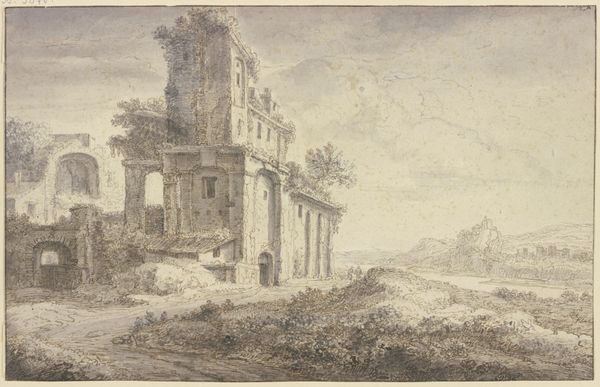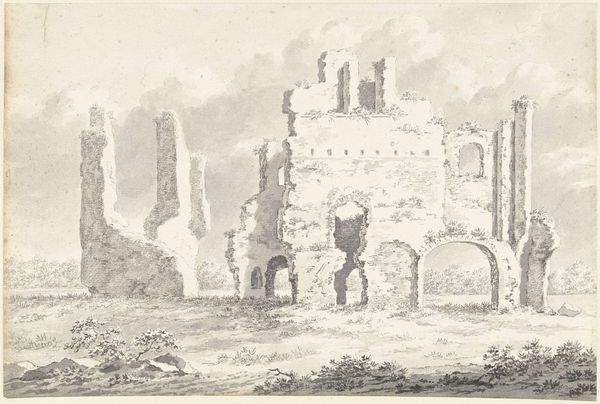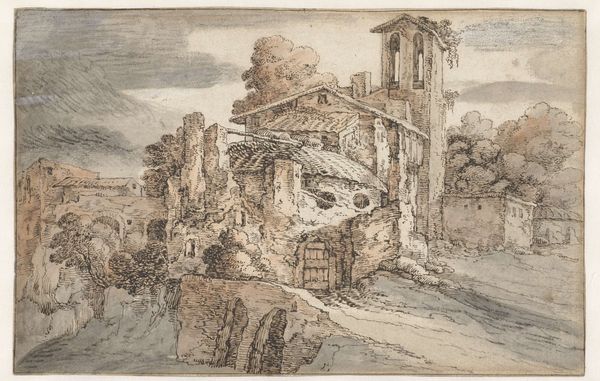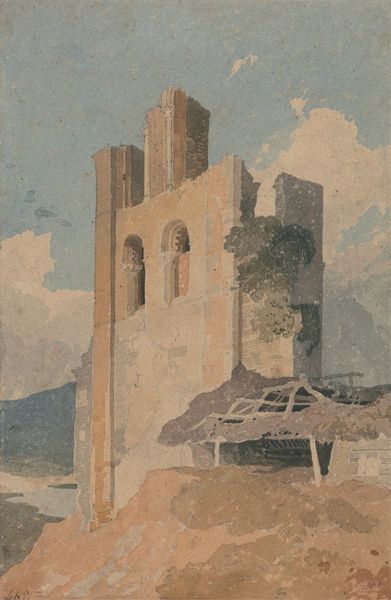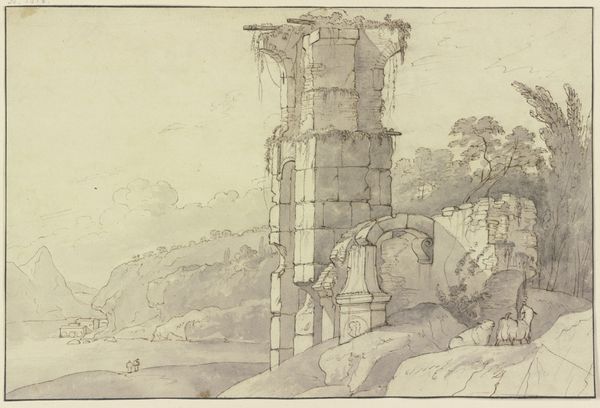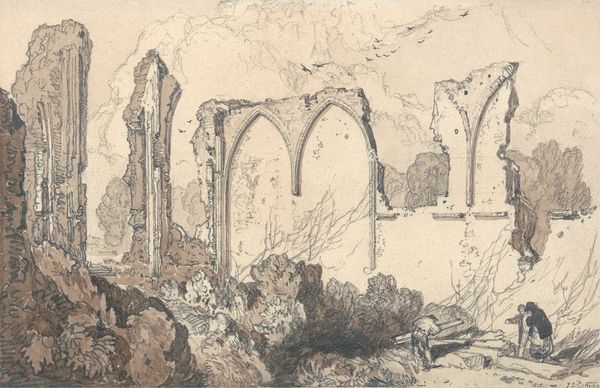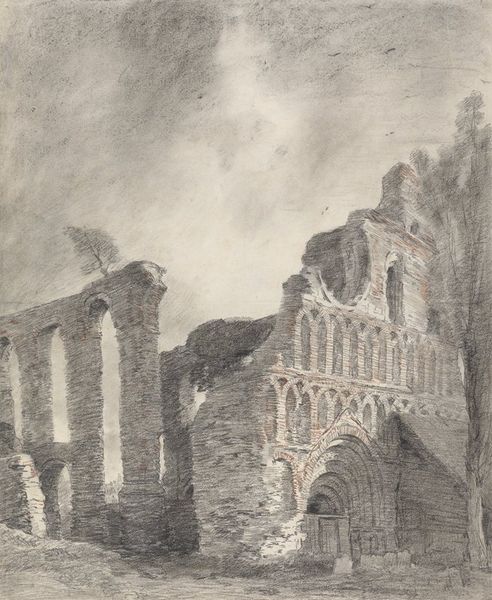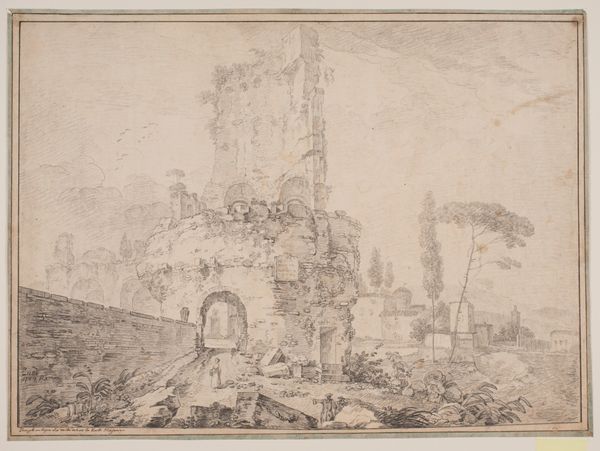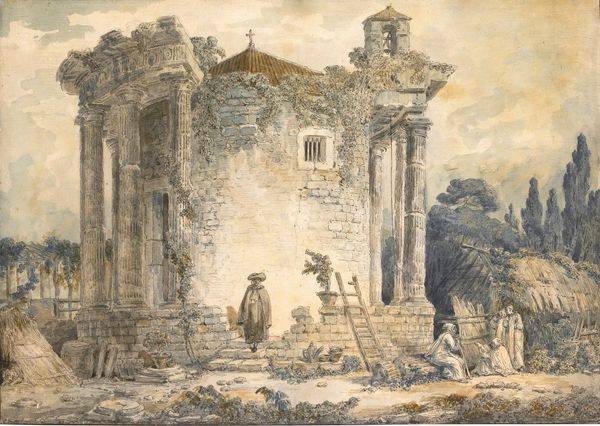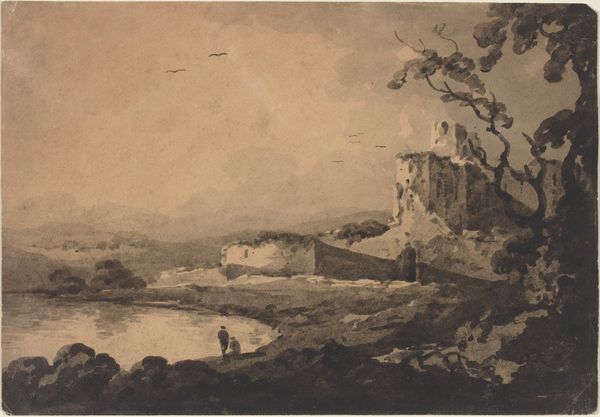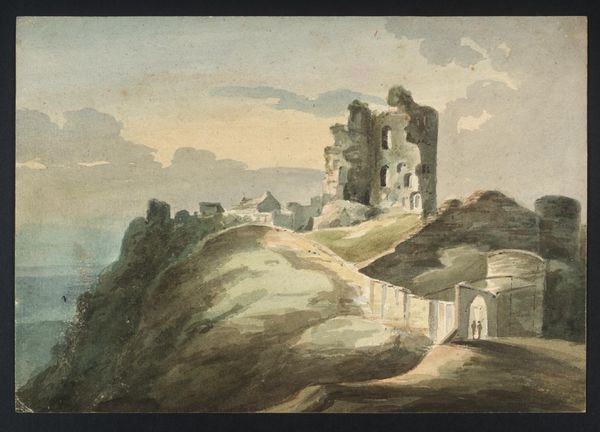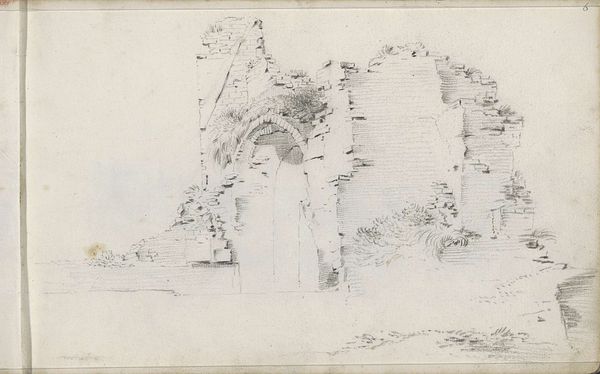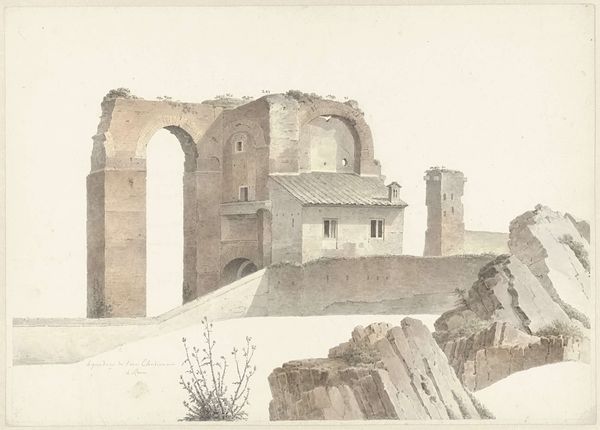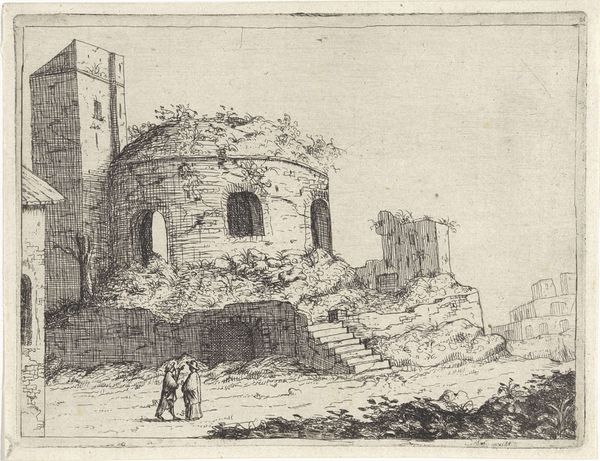
drawing, watercolor, architecture
#
drawing
#
water colours
#
landscape
#
watercolor
#
romanticism
#
cityscape
#
watercolour illustration
#
watercolor
#
architecture
Copyright: Public domain
Curator: Before us is Thomas Girtin's "A Temple of Vesta," a watercolor drawing rendered with delicate washes. Editor: It evokes such a wistful sense of impermanence, doesn’t it? Like a monument both defiant and yielding to time and the elements. Curator: Precisely! Girtin’s romantic vision here hinges on the ruin as a signifier. The careful composition, with the temple perched atop the rising ground, establishes a hierarchy of forms. Notice how the verticality of the temple plays against the horizontality of the landscape, creating a visual tension. Editor: And that ruin as a signifier… it speaks volumes about empire, doesn’t it? About how civilizations rise and inevitably, fall. This specific depiction, this picturesque rendition, subtly questions the power structures and imperial ambitions of the time, romanticizing decay as a comment on power's fleeting nature. Curator: One could certainly read it that way. But consider also Girtin’s adept use of light and shadow. The soft, muted colors emphasize the textural qualities of the stone, almost inviting us to consider the physicality of the structure. Editor: Agreed, and those washes contribute to that romantic allure. But think about who had the privilege to even witness, let alone depict, such scenes. These "ruins" became aesthetic commodities, divorced from the often-violent histories they represented, accessible only to certain classes and perspectives. The aesthetics of Romanticism, too, can perpetuate skewed historical narratives. Curator: Your point about accessibility and perspective is valid, but I see Girtin primarily exploring the visual and structural interplay within the artwork itself, independent of imposed narratives. Editor: Maybe. Yet, it is hard not to consider that this painting reflects not just artistic skill but also social context of imperial vision. Curator: Regardless, "A Temple of Vesta" presents us with an intriguing intersection of artistic technique and cultural implications. Editor: Indeed, prompting crucial questions on power, vision, and how we frame our histories.
Comments
No comments
Be the first to comment and join the conversation on the ultimate creative platform.
